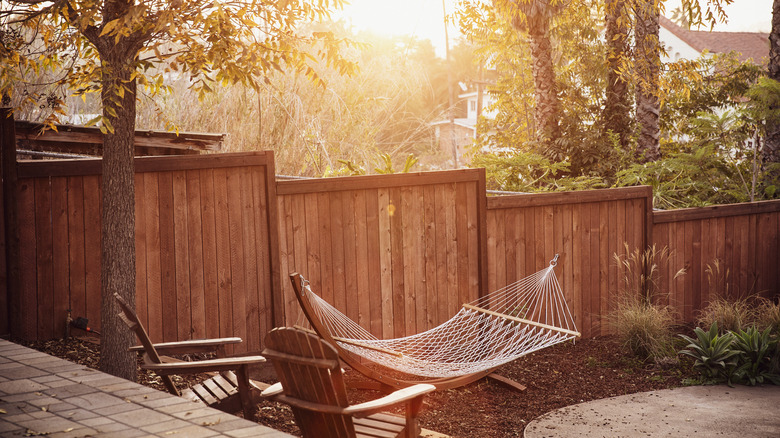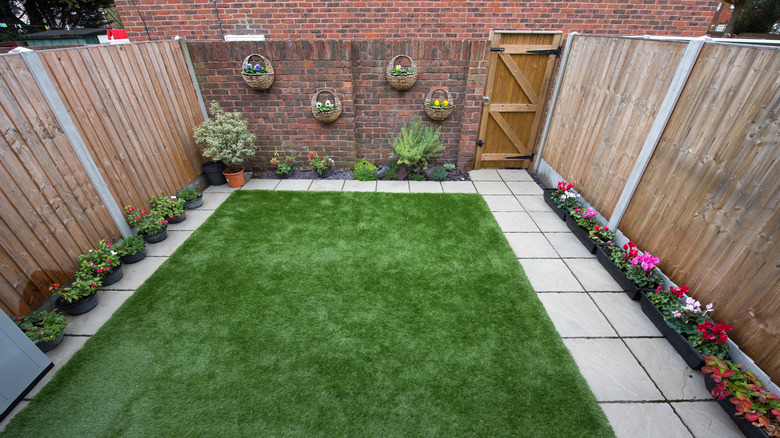3 Privacy Fence Designs That Are Perfect For A Sloped Backyard
The word "backyard" conjures images of outdoor barbecues, space for kids to toddle safely around in, or a small patch of grass for gardening, all within the privacy of your own property. While these scenarios are easily carried out on even, level terrain, they prove a bit more challenging for homes with sloping backyards.
A study carried out by HouseCanary showed that backyard slopes and their exposure to neighbors are some of the factors that can greatly affect a home's value. Thankfully, there are a handful of clever workarounds to these problems, including amazing ways to design your backyard slope, DIYs for safer downhill pathways, and the type of fencing you choose to use. But guarding your backyard's privacy should be addressed not just for your peace of mind but also for your property's value in the future.
Putting up a fence suited to the uneven terrain of your sloped backyard is the best way to ensure privacy. Depending on its degree of steepness, your backyard slope can call for a fence whose top is either flat, stepped, or sloped.
For flat-topped fences, the tops of each picket are lined up straight and level, resulting in a cleaner look and finish. These can be installed in backyards with gently undulating slopes. As the ground isn't flat, you'll find yourself having to deal with small gaps at the bottom of the fence. These gaps can be filled in with soil, rocks, or gravel. Your green thumb could also come in handy if you want to trim the fence bottom with plants or bushes.
Sloped and stepped height fences
Sloped height fences have a top line that traces the incline of the slope. The posts and pickets are set vertically, driven into the ground in small increments, and the base creates a smooth, seamless line following the ground's slope. The best part of a sloped fence is that it leaves no gaps between the ground and the bottom part of your fence, ensuring complete privacy for your backyard. It's also great in terms of security, as the no-gap feature will keep children and pets inside the yard.
Stepped height fences are adapted for steeper ground. Their name is taken from their staggered appearance, which mimics stair steps. Fence panels are attached to evenly spaced posts on a sloping landscape. It's important to note that your backyard's slope should be more than 15 degrees to properly install a stepped fence, an angle that will allow a gradual stepped pattern.
A challenge posed by this fence design is the sizeable triangular gap it leaves at the bottom. This big gap could let animals or even children crawl through, defeating a fence's security and privacy purposes. Again, soil, gravel, or landscaping in the form of plants or bushes could be used to fill it in, but a more effective and aesthetic approach would be the addition of a kickboard. Also known as rot boards, kickboards are horizontal boards installed along the bottom of the fence for stability and support. Their purpose is to fill the gap between the fence and the ground, giving the fence extra protection against moisture, animals, pests, and rot.

